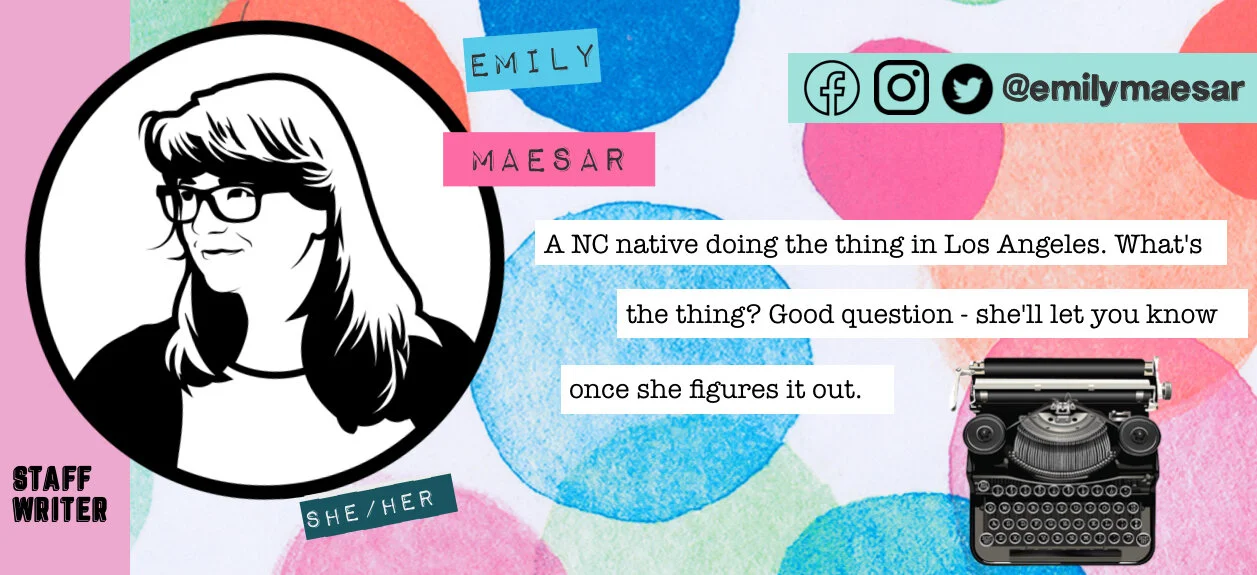THE YELLOW WALLPAPER doesn't connect with its familiar source story
Written and Directed by Kevin Pontuti
Starring Alexandra Loreth, Joe Mullins, Jeanne O'Connor
Premiering at Cinequest on March 20 - playing during the fest until 3/30
by Emily Maesar, Staff Writer
Like all good gothic short stories and novellas, especially from the end of the 19th century, Charlotte Perkins Gilman’s The Yellow Wallpaper is about something. Unlike Henry James’s The Turn of the Screw, there are not so many interpretations of the story and its meaning. It is clearly a story of madness and womanhood during the story’s particular time - especially with it’s semi-autobiographical nature. Which brings us to Alexandra Loreth and Kevin Pontuti’s most recent adaptation of Gilman’s short story.
Loreth stars as Jane, who’s travelling with her husband to a rental home they have for the next three months. Jane’s been ill recently, and John (Joe Mullins) thinks it might do his wife some good to be in the countryside, to regain her health. When he insists that they stay in the room upstairs that’s covered in a yellow wallpaper, Jane’s mental state starts to deteriorate quickly. The longer she stares at the walls, alone in the house, the more she feels like there’s a woman trapped behind the yellow pattern. And maybe it’s her.
The Yellow Wallpaper is a feminist tale by way of showing the consequences of not taking women’s mental health seriously. While it’s not everybody’s cup of tea to consume feminist tales that fall on the cautionary side rather than the empowerment side, I tend to enjoy both. I think each has their place in media, culture, and all of our daily lives. And I would say they both have about the same batting record of goodness, the film included.
I will confess that I haven’t seen another adaptation of Gilman’s story, at least not to my knowledge, but this version feels flat in a way the original tale simply does not. Without seeing any others, I’m not sure if it’s a function of the adaptation process (some prose is simply very hard to tell in a visual medium), or a function of this particular production. Given some of my feelings on certain choices in the film language and sound scape, however, I’m inclined to lean toward the latter.
My biggest issues with the film, as a whole, stem from two major issues. The first is that I feel no connection to Jane as she descends into madness. And maybe that’s a personal thing, but I feel like the film could have spent even just a little more time with her character before the wallpaper starts to consume her. There are no stakes to be had, no loss to really be felt, as the color and pattern take over her every moment. She feels like an empty shell of a person to fill with madness. And maybe that’s the point, but I just don’t think it’s done particularly well.
And my second biggest issue is the cinematography. Coupled with an overly present score, that is often an echo of a better gothic horror film, a lot of the photography simply lacks for me. There’s a lot of empty space, simple objects and places, and obviously it’s all meant to be menacing, or to show Jane’s mental state as it deteriorates… but I just don’t think the cinematography actually accomplishes that. It ends up feeling like a bunch of look tests stitched together into the final product, instead of a cohesive visual language.
Now, despite all of that, I did enjoy a few pieces of cinematography. There are a few moments that stuck out and that really felt like they understood the tone that The Yellow Wallpaper was trying to create. I only wish the rest of the film had been shot similarly. In particular, there’s a lovely sequence when the rain reflects into the room, through one of the many windows, and it creates the illusion that the wallpaper is moving - just like Jane thinks it is. It’s a really nice way to suggest the idea without just showing it in a VFX shot.
I also think that the marketing, especially the poster, are extremely good examples of what the film was trying to be - but ultimately failed at actually achieving. It wasn’t for a lack of trying, and it’s worth recognizing that gothic horror is some of the hardest to do well in motion. At least from my perspective. It can be easy to pull single images that evoke the very specific emotions needed to make a gothic horror story work, but harder to maintain it for the length of a film. In motion, no less.
Ultimately, I think The Yellow Wallpaper was a valiant effort, but it doesn’t work on a fundamental level. It’s pacing is off, it doesn’t seem to really connect with it’s lead, and the visuals of the majority of the film don’t really convey the horror that it’s so desperate to find. Also, who has their bed in the literal center of their bedroom? That’s absolute madness.



